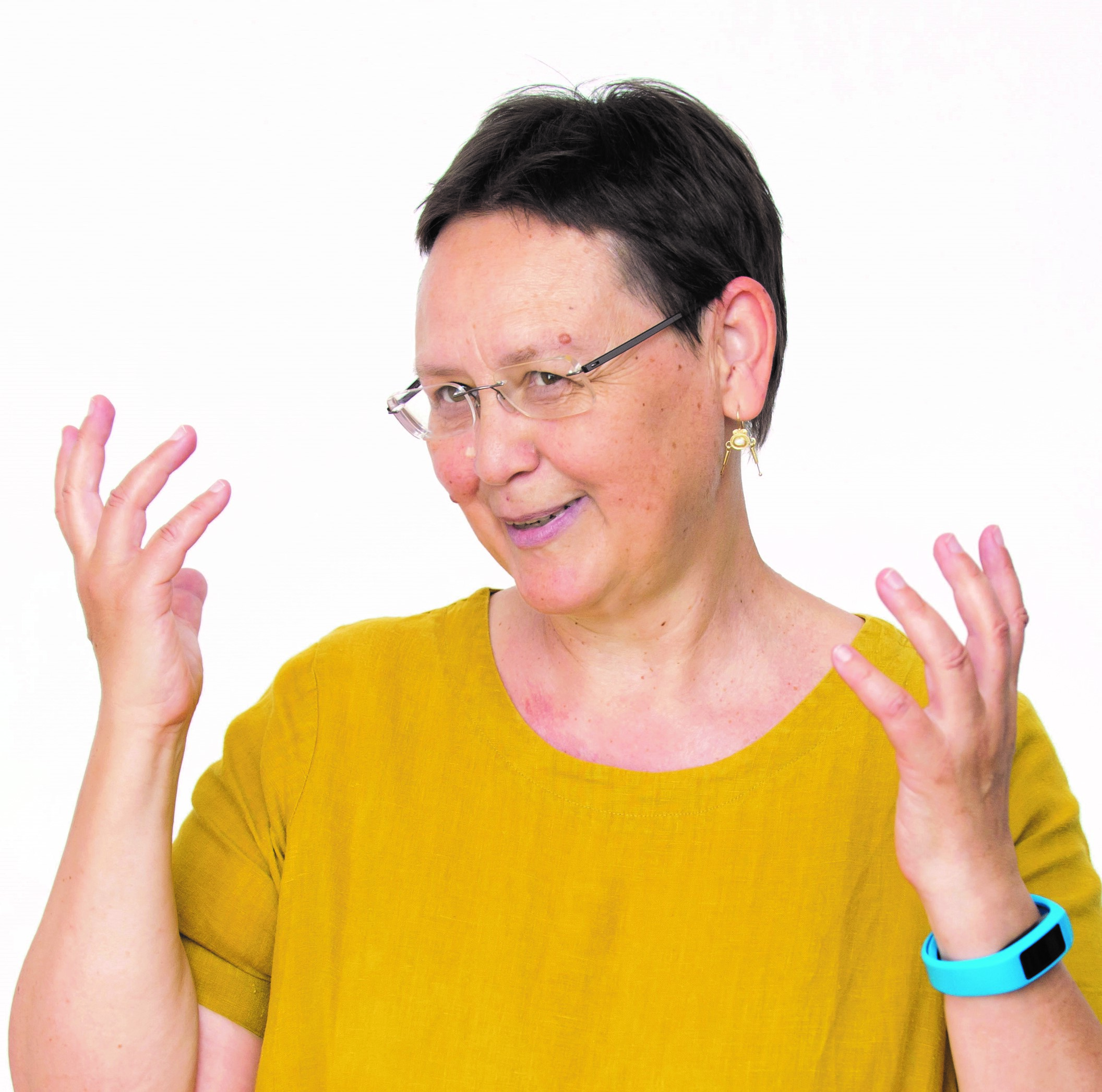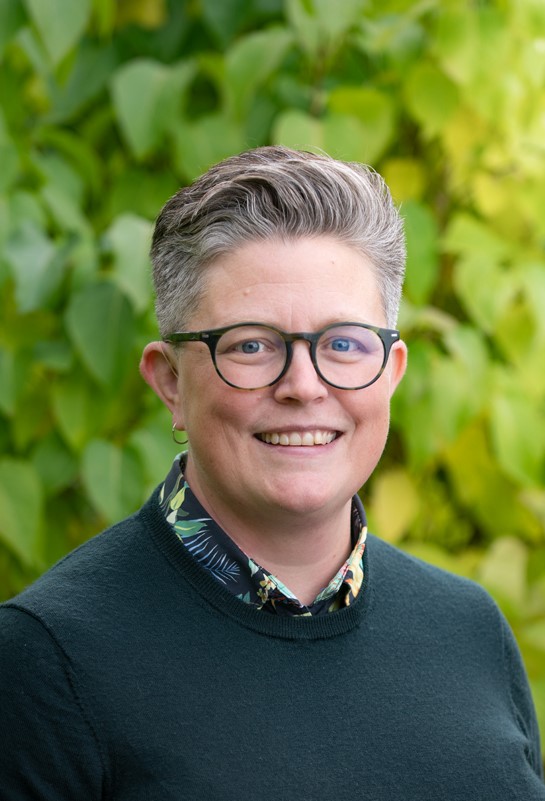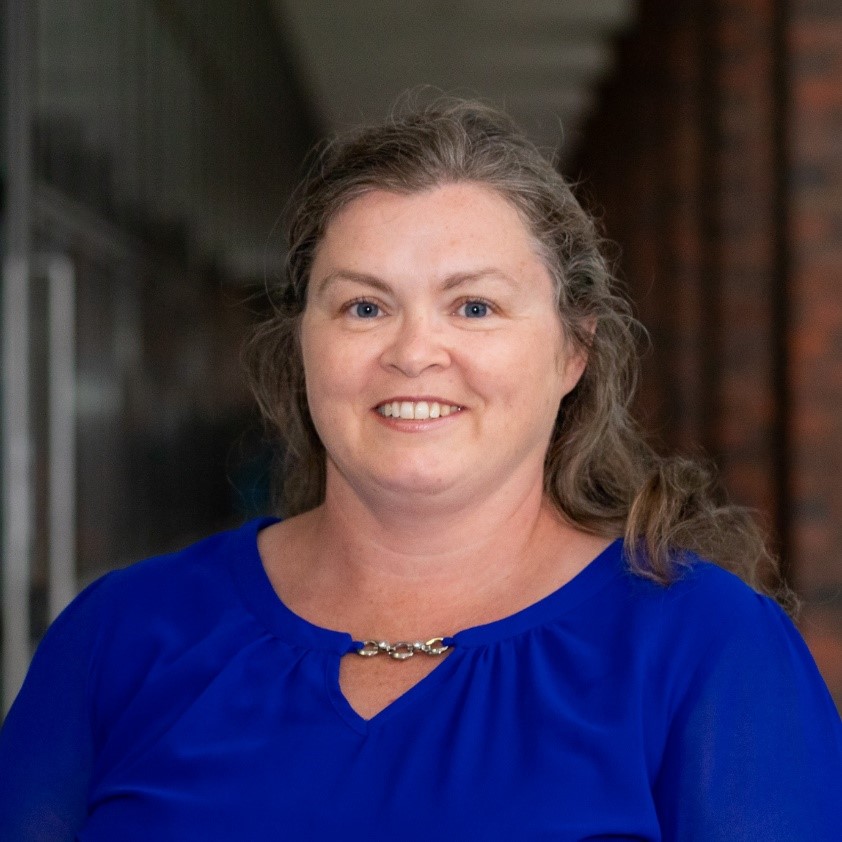Mojca Cepic, Faculty of Education, University of Ljubljana, Slovenia
From theoretical studies of liquid crystals to professional learning communities of teachers
Liquid crystals are materials that reflect physics from one to six dimensions, from orientational order to crystalline symmetries. They are complex, intricate, peculiar, and full of hidden beauty. Therefore, my desire was to introduce them to undergraduate students and to students at the pre-university level, which resulted in a general theoretical framework on introduction of front-end research to physics education. As front-end research is not known to everybody, ideas that lead to discoveries may be used for identification of able students, and if the teaching is accompanied by illustrative and possibly hands-on experiments, these topics might be used also for identification of able students with weaker social and economic background that often do not excel in regular schoolwork. Finally, any of these ideas cannot be implemented without teachers. ERASMUS+ projects 3DIPhE, STAMPEd and RISE allowed us to establish a strong community of physics, math and science teachers in general, we meet, discuss, try new experiments etc. regularly, and we have learned a lot from each other. To finish, the three focuses in physics education mentioned above will be discussed to more details in the lecture.
Mojca Čepič was trained as a physics teacher. After graduating, she worked as a physics teacher at a high school for a few years. She did her PhD in theoretical studies on soft matter, on liquid crystals, focusing on the theory of polar smectics. She proposed the phenomenological model of antiferroelectric liquid crystals, which led to the prediction of the structure of one of the liquid crystalline phases. The structure was confirmed a few years after her prediction when the method of resonant X-ray scattering was developed, which is sensitive not only to the position but also to the orientation of molecules. She is still active in theoretical research in soft matter.
After completing her PhD, she worked as an Assistant Professor of Physics at the University of Ljubljana, Faculty of Education, Department of Physics and Technology. Since her audience consisted of prospective physics teachers, she also became active in physics education research. She mainly focused on introducing contemporary physics to different levels of education, from superconductivity to liquid crystals and polymers. In addition, she also drew inspiration from everyday phenomena and observations. There she developed models to enable controlled studies of circumstances in which phenomena such as a double or spreading shadow, an artificial solar eclipse, or underwater light beams occur. She is currently the editor-in-chief of the European Journal of Physics, a journal that publishes articles relevant to university physics education.
Anna Danielsson, Department of Teaching and Learning, Stockholm University, Sweden 
Unexpected trajectories into higher education physics: Perspectives on gender, identity and culture
This talk will explore a diverse set of trajectories into higher education physics, zooming in on what has made physics studies possible for minoritised students. In doing so, mechanisms of in/exclusion will be highlighted, with a focus on how gender and social class is made relevant in students’ stories about their trajectories to higher education physics.
Anna T. Danielsson is a Professor of Science Education and Head of the Science Education section at the Department of Teaching and Learning, Stockholm University. Her research interests are centred around issues related to gender, identity and power in the context of teaching and learning science and technology. Danielsso recently published the co-edited book Physics Education and Gender: Identity as an Analytic Lens for Research (together with Allison J. Gonsalves) and her work has also been published in numerous international journals, including International Journal of Science Education and Physical Review Physics Education Research. Prior to joining Stockholm University she has held appointments at Uppsala University, University of Cambridge and King’s College London. Danielsson is a member of the Young Academy of Sweden.
Eilish McLoughlin, School of Physical Sciences & CASTeL, Dublin City University, Ireland 
Physics Teacher Professional Learning: innovative models for promoting culture and addressing societal issues
Two of the major challenges facing physics education internationally is the shortage of qualified physics teachers and an increased focus on the use of integrated STEM learning experiences at primary and second level.Firstly, this talk discusses the design and influence of a professional learning programme to upskill second-level teachers of mathematics, chemistry, biology to become qualified as physics teachers. The programme design includes principles that are fundamental to effective physics teacher education, i.e., strong physics knowledge is essential for good teaching, and teachers carrying out a practitioner inquiry (PI) on their own practice as part of a professional learning community (PLC) will enhance their content knowledge for teaching physics. Secondly, this talk shares the experiences and influences of a STEM Teacher Internship (STInt) programme that has provided paid summer placements for over 250 pre-service and novice in-service STEM teachers across 60 host organizations across Ireland. The influence on teachers’ personal and professional learning, awareness of equity and societal issues, use of ‘real world ‘contexts and integrated STEM learning approaches, inspired by their own immersive learning experiences in industry, is discussed. This talk shares recommendations for the design and implementation of immersive and collaborative learning experiences for enhancing physics teacher professional learning and influencing classroom practice.
Eilish McLoughlin is an Associate Professor in Physics Education at the School of Physical Sciences in Dublin City University. Her research interests focus on physics education research at all levels of education. She has led and collaborated in a wide range of research projects focussed on STEM teacher education at national and European level, including ESTABLISH, SAILS, IN-STEM, OSOS, ENERGE 3DIPhE, STAMPEd, RISE, and STEM DIGITALIS. She has served as a member of IUPAP C14 Commission for Physics Education 2014-2021 and as Executive Secretary of GIREP vzw (International Research Group on Physics Teaching) Board since 2020.
Ian Bearden, Niels Bohr Institute, University of Copenhagen, Denmark
The importance of laboratory instruction in the physics curriculum 
Laboratory instruction in physics is often justified with the claim "physics is an experimental subject." While this claim is certainly true, we can make much better and--one hopes--more convincing arguments for laboratory instruction in physics. This discussion is particularly important for many reasons. Among the reasons is that students are often unclear on why they have to spend time in the lab and thus feel the time would be more optimally used doing other course activities. A convincing argument for why we include "labs" in our curriculum could be helpful in obtaining student buy-in. Another reason is that there is little hard evidence that laboratory work helps students understand the subject, at least to the extent that end-of-term exams measure understanding. Finally, in many educational institutions, labs are under budgetary pressure since they often require a larger investment in both equipment and time. In this talk, I will give my views on why hands-on experience in the lab is important and how laboratory work can be tuned to give students meaningful educational experiences in the laboratory.
Ian Bearden is a faculty member at the Niels Bohr Institute, University of Copenhagen. He came to Copenhagen in 1994 as a post-doc in high spin gamma-ray spectroscopy after receiving his PhD from Purdue University based on research performed as a graduate assistant at Argonne National Laboratory. In 1995, Ian moved up in energy and joined the High Energy Heavy Ion group, where he has been since. Ian Bearden is a member of the ALICE collaboration at the LHC.
In 2020, he was appointed Professor of Experimental Particle Physics and Development of Teaching in Experimental Physics at the Niels Bohr Institute.
From 2013-1023, Ian Bearden was the director of the NBI’s outreach lab “Ungdomslaboratorie” (Lab for Youth). He is the founding chair of the Danish Physical Society’s section for Outreach and Teaching, and a member of the European Physical Society’s Physics Education Division board. He currently serves as the Honorary Secretary of EPS Executive Committee and President of the Danish Physical Society.
Ian Bearden´s interests include improving laboratory-based teaching and developing low-cost apparatus for use in teaching.
Italo Testa, Physics Department “E. Pancini”, University of Naples Federico II, Naples, Italy
Use of quantitative methods in Physics Education Research: searching for new perspectives to inform theory and practice
Starting November 2022, Physical Review Physics Education Research, the flagship journal in physics education research community, has announced the establishment of a Statistical Modeling Review Committee to assess the quality of statistical modeling techniques in submitted papers. The establishment of this committee reflects the increasing number of submissions that exploit techniques such as structural equation modeling, linear regression and Rasch analysis. While the declared aim of this committee is to relieve the reviewers’ burden to delve into technical details of papers, it also clearly signals that the physics education research community is increasingly acknowledging the need to support its claims through suitable quantitative methods, going beyond the old-fashioned motto Education is not Measurement. In the first part of this talk, I will briefly review the main statistical techniques used nowadays in physics education research and call for a better interaction with the statistical and educational psychology communities. Lack of such an integration, I will argue, is the main impediment to finding consensus about the obtained results even within the physics education research community itself. In the second part of the talk, I will try to envisage possible new research avenues for physics education research building on the possibilities offered by advanced statistical methods.
Italo Testa is an Associate Professor in Physics Education at the Physics Department “E. Pancini”, University of Naples “Federico II”. His main research interests are the study of students’ attitudes, identity and metacognitive skills in physics through quantitative methods and the development of research-based teaching-learning sequences for secondary school students. He is mostly recognized for his work on Rasch analysis and on the role of visual representations and spatial reasoning in physics and astronomy education. More recently, his research focuses on the role of accuracy of self-evaluation on students’ performances. He is currently in the editorial board of Physical Review Physics Education Research journal.
Ľubomír Antoni, Gabriel Semanišin, Faculty of Science, Pavol Jozef Šafárik University in Košice, Slovakia 

Challenges in AI-generated physics education
Artificial Intelligence (AI) is one of the fastest-growing fields dealing with understanding and building intelligent machines that can compute how to act effectively and safely in a diversity of novel challenges. Today, generative AI is applied in a varied collection of applications, from creating art to helping in education and improving healthcare. Generative AI has the potential to bridge the gap between the current state of knowledge and the knowledge of graduates by generating educational content that is tailored to the needs and interests of individual learners. Generative AI can form personalized learning paths for students on their learning history and preferences, can generate simulations and scenarios that simulate real-world situations, or can help to analyze big data and identify patterns and hidden information that are difficult to detect by humans. Automated AI assessment, machine learning, or learning analytics can boost the learning and instruction quality in STEM education. Several types of AI applications in STEM education were investigated, for example, educational programming or social robots, intelligent tutoring systems, student behavior detection, learning prediction, automation, or AI textbooks. The applications of AI in innovative physics education can enhance the experience for both students and teachers. For example, the visualization and evaluation techniques can help to find hidden patterns in the students’ solutions which allow to prevent student mistakes or misconceptions. We present an example of the application of AI in innovative physics education with the help of several machine learning methods and algorithms.
Gabriel Semanišin is a Professor of Computer Science at the Institute of Computer Science, Faculty of Science, Pavol Jozef Šafárik University in Košice, Slovakia. His research activities are focuses mainly on algorithmic graph theory, combinatorial optimisation, machine learning and their applications in various areas of theoretical and applied informatics. He participated at the development and implementation of complex information system for university study management. He is a co-guarantor of study programs Applied Informatics, Data Analysis and Artificial Intelligence and Computer Science. He was an expert guarantor of the national project IT Academy – education for the 21st century.
Ľubomír Antoni is an Assistant Professor at the Institute of Computer Science, Faculty of Science. He aims to proposal of selected machine learning methods and applications of these methods in solving the tasks of supervised and unsupervised learning. He is a member of the Slovak Information Society. His scientific work is focused on methods of formal concept analysis, fuzzy logic and machine learning.
